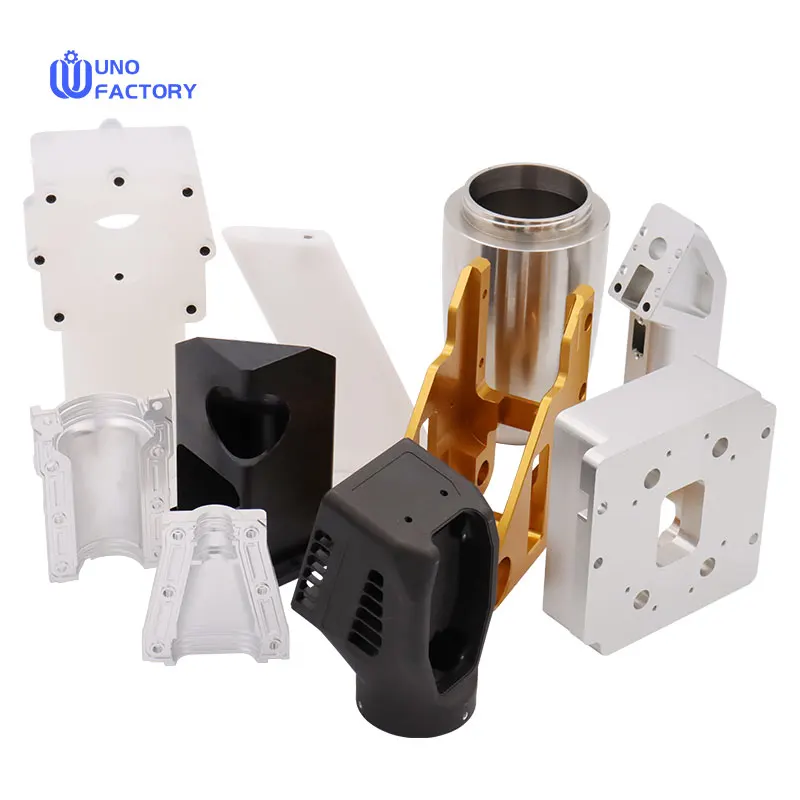Time to read: 6 min

This article delves into the diversity of milling processes, covering 12 distinct milling techniques, each with its unique applications and advantages. By the end of this article, readers will be equipped to select the appropriate milling method based on their project requirements.
Milling is an indispensable process in the manufacturing industry, capable of shaping various materials into desired parts or products. CNC milling machines perform this process through a multitude of milling operations, each with specific tooling and machine motion.
The CNC milling process includes designing the printed part, converting the design into G and M codes (instructions understood by the CNC machine), tooling & setup, and execution of the process.
Face Milling: This technique flattens the workpiece surface. The cutters used in this method have an axis of rotation perpendicular to the surface, aligning the tool’s face parallel to the workpiece. This method is particularly effective for creating flat surfaces in applications such as automotive cylinder heads and heat sinks.
Peripheral Milling: This operation is specifically for machining flat surfaces and contours on the workpiece. Using cylindrical cutters with straight or helical teeth, it removes materials to create flat or stepped surfaces, slots, and recesses.
Side Milling: This refers to machining a side of the workpiece using side milling cutters or end mills. The lateral edges of the rotating cutter (side teeth) remove material to form flat vertical surfaces, edges, grooves, slots, complex contours, fins, and more.
Straddle Milling: This method can simultaneously machine two parallel surfaces on a workpiece, maintaining uniform distances between them.
Gang Milling: This involves multiple cutters—such as end mills, form cutters, and slab mills—mounted together on a single arbor to create complex features and intricate details.
Angle Milling: Angular features in CNC machined parts are often achieved through angle milling. The cutter’s axis is angled relative to the machining surface.
Form Milling: This involves using cutters shaped as the negative of the desired contour. This method allows for precise and custom shaping of complex designs.
End Milling: This is one of the most popular types of milling operations. The end mills execute this operation by feeding the work into it in a perpendicular or angled direction.
Saw Milling: Saw milling is executed by a large cutter with teeth around its circumference. This method is particularly useful for creating narrow slots and dividing the workpiece into two parts.
Gear Milling: Gear milling is a specialized operation used to refine manufactured gears to precise dimensions and surface roughness.
Thread Milling: This operation is for cutting the internal and external threads in the workpiece.
CAM Milling: The CAM milling operation produces these components with a diving head tool, facilitating the rotation of the workpiece to position it so the tool can remove the surface materials according to the designed CAM profile.
Material Type: The work material type significantly impacts the choice of CNC milling operations as variations in the properties directly impact the material removal rate and tool wear.
Desired Finish: The surface finish requirements are another consideration in milling operation selection for your design.
Geometric Complexity: Not all milling techniques can create complex and intricate details on a workpiece.
Machine Parameters and Settings: The machine parameters such as spindle speed, feed rate, and cutting depth are crucial in selecting the right milling operations.
Select the Right Cutter: Each type of operation has its own set of compatible cutters, and using the wrong type can result in subpar results or even damage the tool and workpiece.
The complexity of shapes and features in CNC milling is only achievable by selecting the appropriate operations for your project. Each operation offers unique advantages and capabilities for creating specific geometries. Advanced machines and a suitable set of cutting tools are essential for performing these diverse operations effectively.
At Unofactory, we leverage the latest CNC milling machines and have experience handling milling projects. Our CNC Machining and CNC Milling Services include design optimization, all milling operations, and even surface finishing for the milled part. Furthermore, a dedicated quality control team ensures you get the parts with the exact specifications you need. Request a quote and kickstart your CNC milling Project with Unofactory!
What are the basic types of milling machines?
The basic types of milling machines include horizontal and vertical milling machines. Here, the categorizations are based on the axis movement and orientation of machines.
Which milling operation achieves the highest level of precision?
Form milling is known as the most precise milling operation as it involves a single pass mechanism that significantly lowers the tool deflection and inaccuracies.
Which type of milling operation incurs the highest cost?
Gear Milling tends to incur the highest cost because it requires specialized cutters, long cycle times, and precise setups.
What is the most cost-effective type of milling operation?
Plain Milling or Slab Milling is the most cost-effective one. It involves simple cutters and a straightforward material removal mechanism from a flat surface.
Introduction:
The Basics of Milling:
12 Milling Techniques:
Choosing the Right Milling Operations:
Conclusion:
FAQs:




